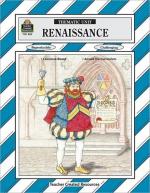|
This section contains 2,102 words (approx. 8 pages at 300 words per page) |

|
Food Production. The overall structure of the European economy was shaped by food production; other economic activities ceased if there was too little food to go around. The absolute importance of food production in the late medieval economy can be demonstrated in many ways, but the most obvious one is that between 75 percent to 90, percent of the total population lived in the countryside and between 75 percent to 95 percent of those people would consider agricultural production to be their primary occupation. In most of Europe, the main activity in agricultural production was growing a grain crop such as wheat or rye, which was the staple of the diet of nearly everyone.
Patterns. Most food was perishable and bulky. It had to be consumed close to where it was produced because the costs of transporting it were too...
|
This section contains 2,102 words (approx. 8 pages at 300 words per page) |

|




